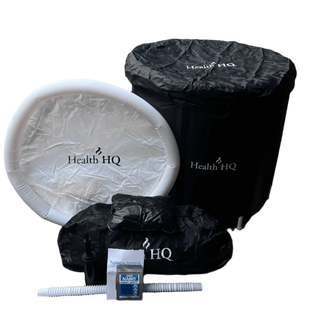Is Creatine Safe, and Are There Any Side Effects?
Creatine is one of the most widely researched supplements in the world of fitness and performance—and also one of the most misunderstood. Whether you're new to supplementation or just cautious about what you're putting in your body, one question always comes up:
Is creatine safe, and does it come with any side effects?
Let’s separate the myths from the science and break down what you really need to know.
🧠 What Is Creatine, Exactly?
Creatine is a naturally occurring compound found in your muscles and brain. It helps your body produce energy rapidly, particularly during short, high-intensity efforts like sprinting or weightlifting.
You already get some creatine from foods like red meat and fish, and your body also makes it in small amounts. But supplementing with creatine (typically as creatine monohydrate) allows your muscles to store more of it—giving you more fuel during workouts and enhancing performance.
✅ Is Creatine Safe?
Short answer: Yes.
Creatine has been extensively studied for decades and is considered safe for long-term use in healthy individuals.
Major health and sports organizations—like the International Society of Sports Nutrition (ISSN) and the American College of Sports Medicine—have concluded that creatine is both safe and effective when used as directed.
Studies have shown:
- No adverse effects on kidney or liver function in healthy people.
- No negative hormonal changes.
- No harmful impact on hydration or cramping (in fact, creatine may improve hydration at the cellular level).
🧪 Commonly Reported Side Effects (and What They Really Mean)
While creatine is safe for most, a few mild side effects can occur, especially when starting supplementation:
1. Water Retention / Temporary Weight Gain
- Creatine draws water into your muscle cells, which may lead to a 2–5 lb increase in body weight.
- This isn’t fat—it’s intramuscular water, which can actually help with muscle performance and recovery.
- Solution: If you want to avoid bloating, stick to a low-dose (3–5g daily) protocol without a “loading phase.”
2. Stomach Discomfort
- Some people may experience bloating or GI issues with large doses.
- Solution: Take creatine with food and plenty of water, and stick to 3–5g per day.
3. Cramping (Rare and Debunked)
- Early anecdotal reports linked creatine to muscle cramps and dehydration, but research does not support this.
- In fact, creatine may help with thermoregulation and electrolyte balance in athletes.
⚠️ Who Shouldn’t Take Creatine?
While creatine is safe for most people, certain individuals should proceed with caution or consult a healthcare provider:
- Those with pre-existing kidney issues
- People taking medications that affect kidney function
- Pregnant or breastfeeding individuals (lack of research)
If you're unsure, talk to your doctor before starting any supplement.
🧬 What About Long-Term Use?
Creatine has been studied in both short-term and long-term trials (5+ years) with no evidence of harm in healthy users. Some newer research even suggests potential cognitive and neuroprotective benefits—particularly in aging populations or those with neurological conditions.
Final Thoughts
So, is creatine safe?
Absolutely—when used properly. It’s one of the most studied, effective, and well-tolerated supplements out there, with a great safety record in both athletes and everyday users.
✅ Safe for long-term use
✅ Minimal and manageable side effects
✅ Backed by decades of research
As always, stick to creatine monohydrate, take 3–5 grams per day, and drink plenty of water. If you’ve been on the fence about trying it, this might be your green light.







